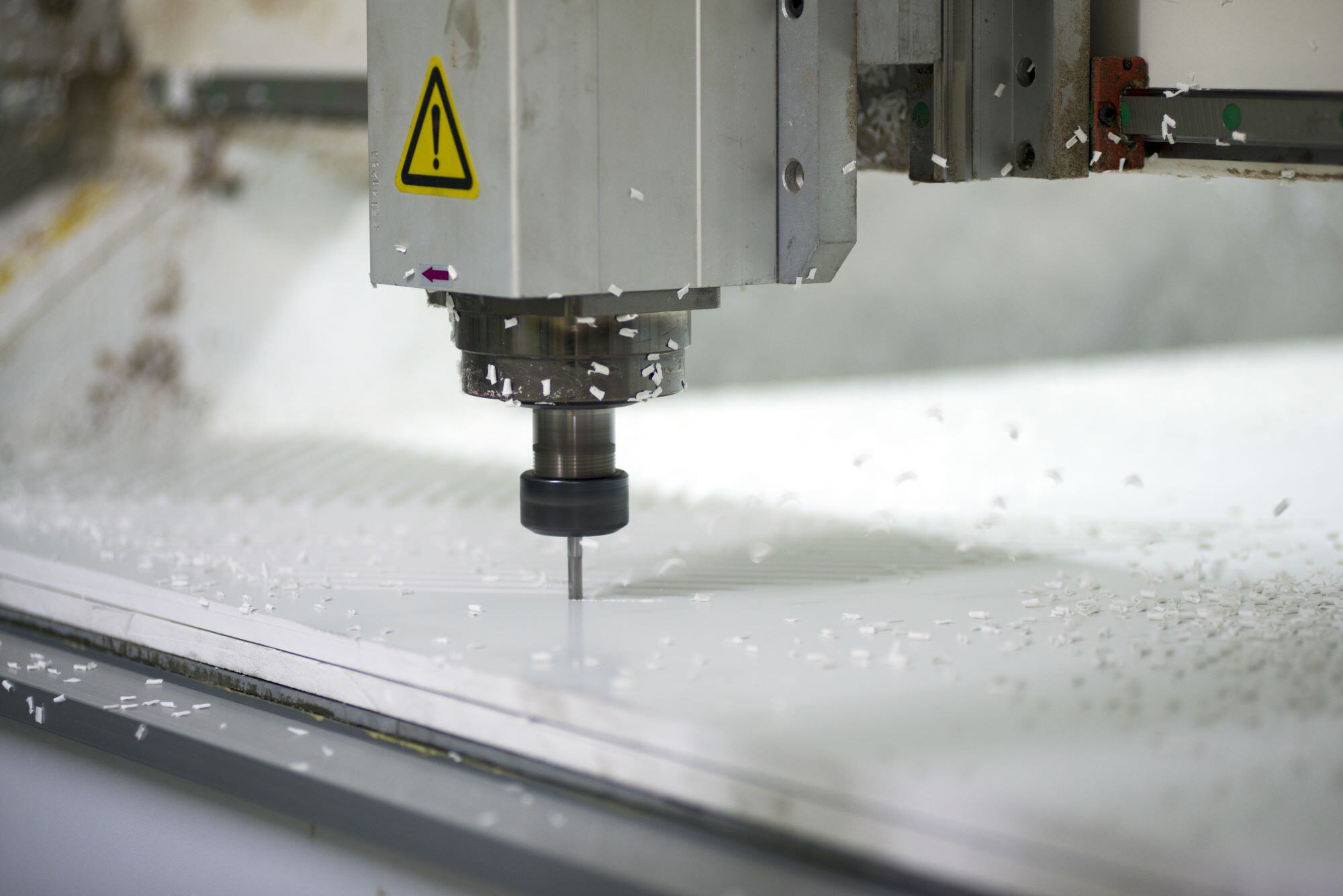
Die Cutting Versus CNC Routing
In plastic part production, cutting, routing and shaping tools come in many forms. Die cutting and CNC routing are both methods for customizing plastic parts, but how do you know which one to utilize and when?
Understanding how to utilize the tools available to you best can help you streamline the production process and result in you exceeding your expectations every time. Keep reading to explore each cutting method, learn the benefits of die cutting and CNC routing and determine which method is best for your project.
What is Die Cutting?
Die cutting is a process that works well for high-volume and flexible material items. Your product can be cut consistently and in high quantities with this option, and perhaps most importantly, die-cutting works extremely quickly. This means that if you are looking for the most cost effective option of processing, this form of cutting may be just what you need. Die-cutting is particularly well-suited to soft materials such as foam and rubber as well as firmer options, including cork and certain plastics. ICP has the ability to die cut plastics up to .187” thick when many other companies would have to use slower processing techniques that drive up cost. There are some limitations with design and type of plastic, so reach out to an expert at ICP to discuss your specific application.
Benefits of Die Cutting in Part Production
- Great for speed and fast turnarounds
- Ideal for high-volume production
- Replicates parts and patterns easily
- Cuts out standard shapes well
When to Use Die Cutting for Projects:
Die Cutting is well-known for its speed and high-volume production benefits, so it works great for large projects and quick turnaround needs. However, it’s limited in design options and what materials it works for. Foam, thin foils, rubber and fiber are all relatively soft materials that die cutting works well on, but it can be difficult for harder materials.
What Is CNC Routing?
CNC routing is a cutting tool that uses a multi-axis cutting method to create parts. Best suited to flat, two-dimensional parts, the 3-axis CNC routing process uses computer commands to precisely cut shapes and designs. Unlike die cutting, 3-axis CNC routing is powerful enough to precisely cut plastics thicker than .187 as well as firmer plastics such as Acrylic and Polycarbonate, and 3-axis CNC routing is a great choice for panels, sheets, cases, and other designs that need a careful touch.
Benefits of CNC Routing in Part Production
- Works on a variety of materials, including plastic
- Ideal for custom work
- Cuts complex designs
- Better for small batches
When to Use CNC Routing for Projects:
CNC routing offers a more customized tool for complex designs and one-off products. If you need a complex part, CNC routing is going to be your best bet. However, if you need a large quantity of parts, this process is a little slower. Due to its complex axis tooling, it takes a little more time, but the results are precise.
Die Cutting vs. CNC Routing – Which Method Is Best?
When determining which method comes out on top for die cutting versus CNC routing, the answer is both. It depends on the project and part you need produced.
If you’re still not sure which option to choose, even after familiarizing yourself with the specifics of multiple production methods, our experts at Industrial Custom Products can help guide you through the process and select the best tools for the job. In order to save you time and money, our professionals help you visualize the pros and cons of production methods as well as suitable materials.
If you’re a product designer or project manager looking for the best process to match your vision, our die cutting and 3-axis CNC routing may be exactly what you need to succeed. Contact Industrial Custom Products today for more information on our plastic production options and project support.
Industrial Custom Products is a one-stop-shop for custom manufacturing and plastic fabrication, including: prototyping and product development, die cutting and dieless knife cutting, thermoforming and vacuum forming, large part thermoforming, CNC plastic routing, fabrication and assembly and drape forming.

